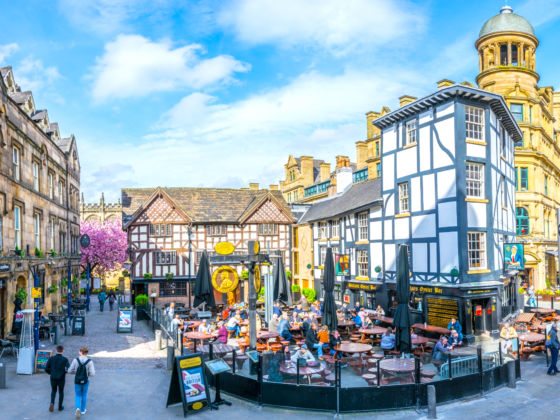Although it’s a city with a big personality, central Manchester is actually a relatively small part of the 490 square miles that make up the Greater Manchester area. But even if you stay conveniently central, you’ll still struggle to exhaust the lengthy list of districts where you can eat, drink, and explore.
Ever since the explosion of interest in the city during the 1990s, Manchester has been undergoing constant change and expansion. The influx of money that came with well-known sports teams, musicians, and businesses has continued to this day, fundamentally changing the image of Manchester from just another provincial British town to a cool, cosmopolitan place.
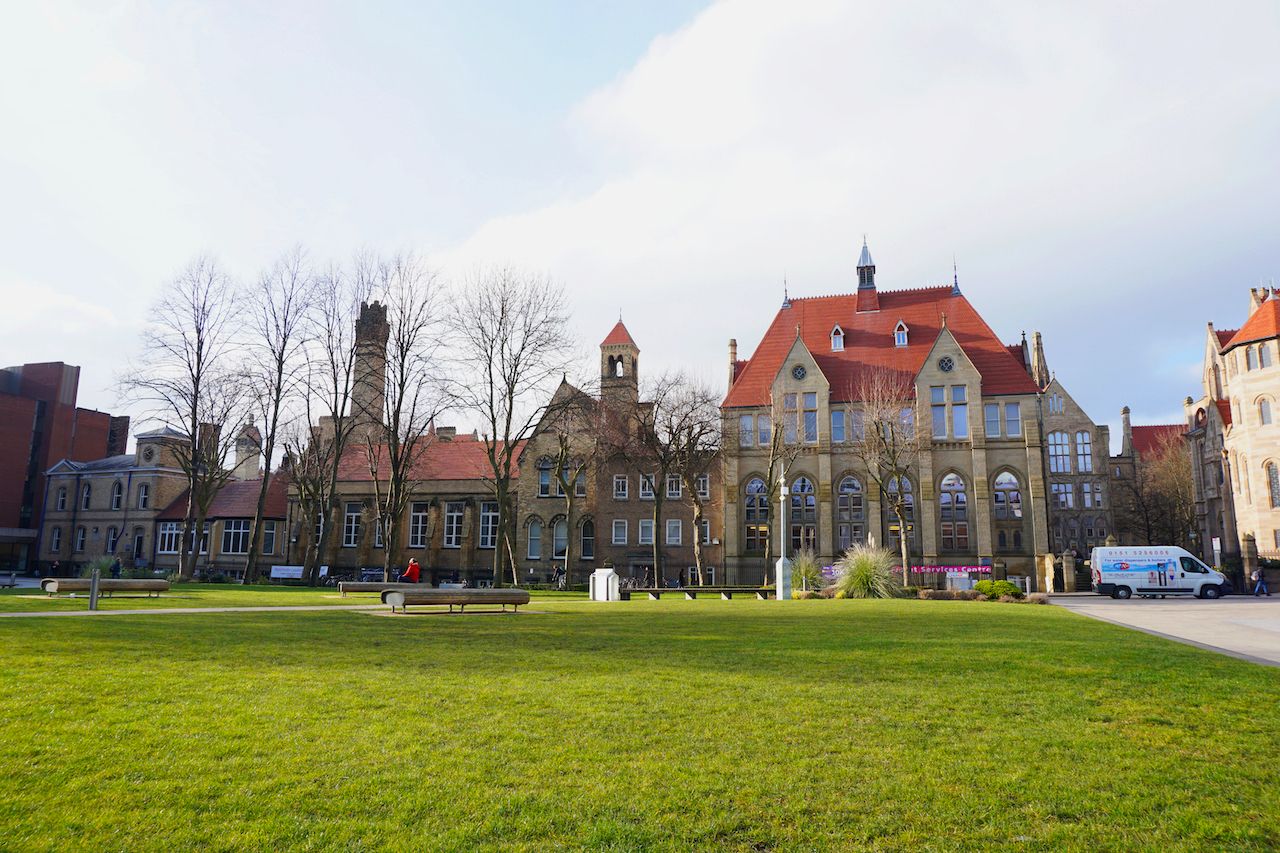
Photo: mohd farid/Shutterstock
Chorlton — Beech Road in Chorlton is only a short stretch of the world, but it contains a great deal for visitors to see. From the wrought-iron veranda on Barlow Moor Road, which houses several good restaurants including the popular Double Zero pizzeria, to the classic English village green in front of the Horse & Jockey pub, it’s a 10-minute stroll that can turn into leisurely hours. Independent shops, bars, and cafes offer food, beer, and good times on a leafy half mile of parks and red brick Victorian houses.
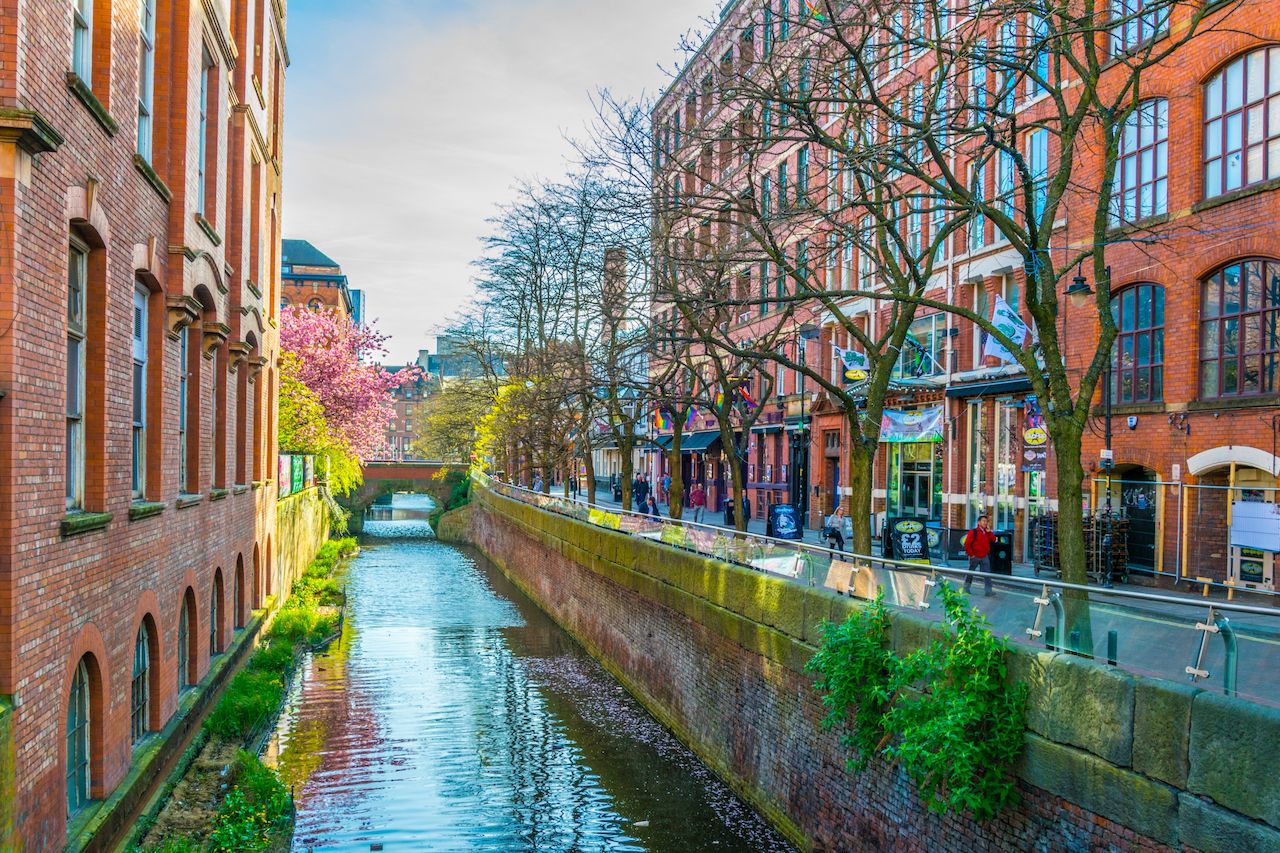
Photo: trabantos/Shutterstock
City center — Manchester has a small city center, but it’s packed with several smaller areas that all have their own distinct vibe. Chinatown is a network of side streets filled with the busiest Asian stores and eateries in town. It’s more pan-Asian than the name lets on though, so make sure to check out the Thai, Vietnamese, and Japanese spots too. The Gay Village, located just a five-minute walk from Chinatown, centers on Canal Street, which has long been the heart of Pride celebrations. Alternative nightclubs and parties for the LGBTQ community, including the popular Homoelectric and High Hoops nightclubs, have now found homes away from the Village, but the area remains buzzing every weekend with bars, clubs, and hotels. For mainstream international brands try the Arndale shopping center on Market Street, while designer names can be found in the high-end department stores in the redeveloped Shambles area.

Photo: Alastair Wallace/Shutterstock
Northern Quarter — With its many independent shops, cafes, bars, and restaurants, the Northern Quarter has inevitably been saddled with the label “trendy.” This neighborhood is a vibrant hub where you can find uniquely curated selections of art supplies, homewares, and crafts at Fred Aldous, Oklahoma, and the Craft and Design Centre, respectively. Around Stevenson Square, there’s a rotating cast of beautifully rendered murals of Bowie, bees, and birds. If you need sustenance then head for Federal or Home Sweet Home where you can brunch until you just can’t take any more avocado toast and single-origin AeroPress coffee.
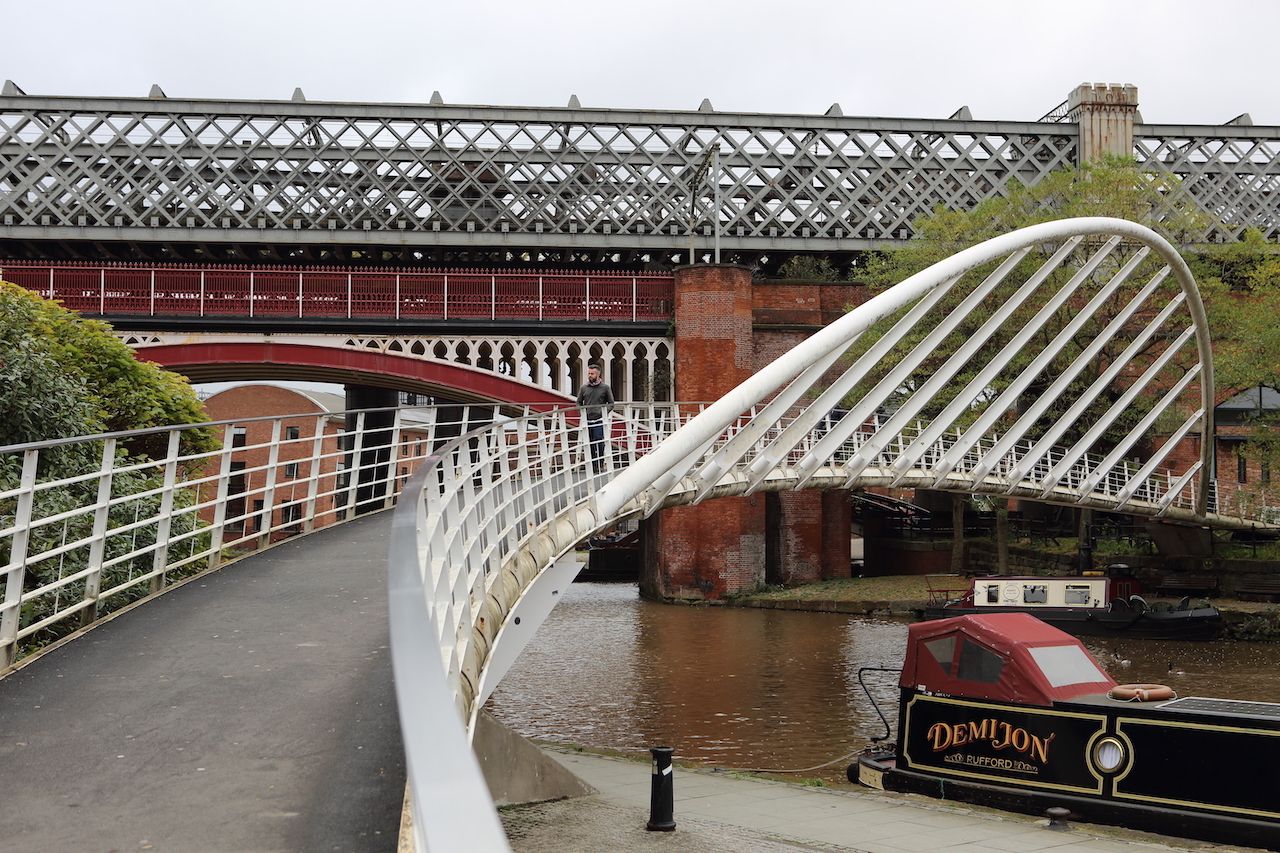
Photo: Eugene Regis/Shutterstock
Ancoats — Ancoats began life as a residential district for industrial workers, so it’s awash with rows of smart-looking brick houses, placid canals, and attractive cobblestone streets. In recent years, money and development have polished the area to a high shine, and now the original houses have been joined by scores of apartment buildings, bars, and the best new eateries in town. On a sunny day, hang out at Cutting Room Square or grab a coffee and a slice of cake from the excellent Pollen Bakery at the New Islington Marina. If you’re around for dinner and drinks then pay a visit to the neighborhood bar and restaurant, Erst.

Photo: Imladris/Shutterstock
East Didsbury — Also known as Didsbury Village, the area is best differentiated into East and West because the appeal of each side is very different. East Didsbury is generally populated by a slightly older crowd who can afford to live in the cottaged streets abutting the main road. There are plenty of cafes for refreshment and you can happily spend some weekend hours leafing through used books in the secret bookstore at the back of The Art of Tea. The thing not to miss, however, is a stroll through the verdant hillside gardens of Fletcher Moss Park. It’s a free botanical garden that’s packed with ornamental trees and colorful plants.
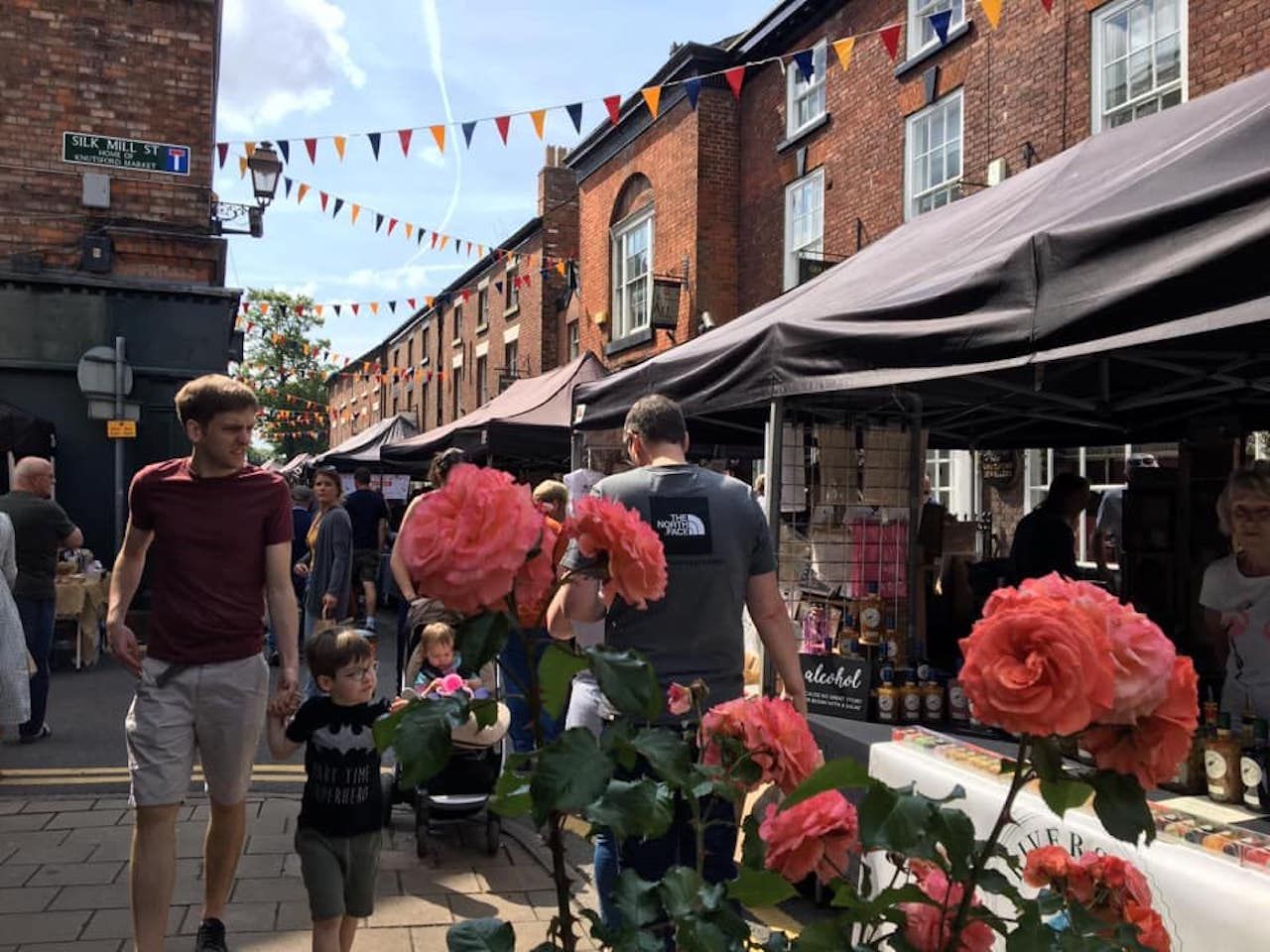
Photo: The Makers Market/Facebook
West Didsbury — Approximately a 20-minute walk from East Didsbury is the younger, more vibrant Burton Road in West Didsbury. It has a looser, more Bohemian feel than its counterpart, and that’s reflected in the crowds of hipster families who frequent the streetside terraces of Folk and Volta. The shops have color and life and there are plenty of independent clothing and homeware stores like the minimalist Moth. Day or night, the bars and restaurants ring with good cheer and the weekends are especially welcoming. Outside the medical center on the last Sunday of every month you can find the Makers Market, a much-loved event with a rotating cast of musicians, food trucks, market stalls, and other entertainment.
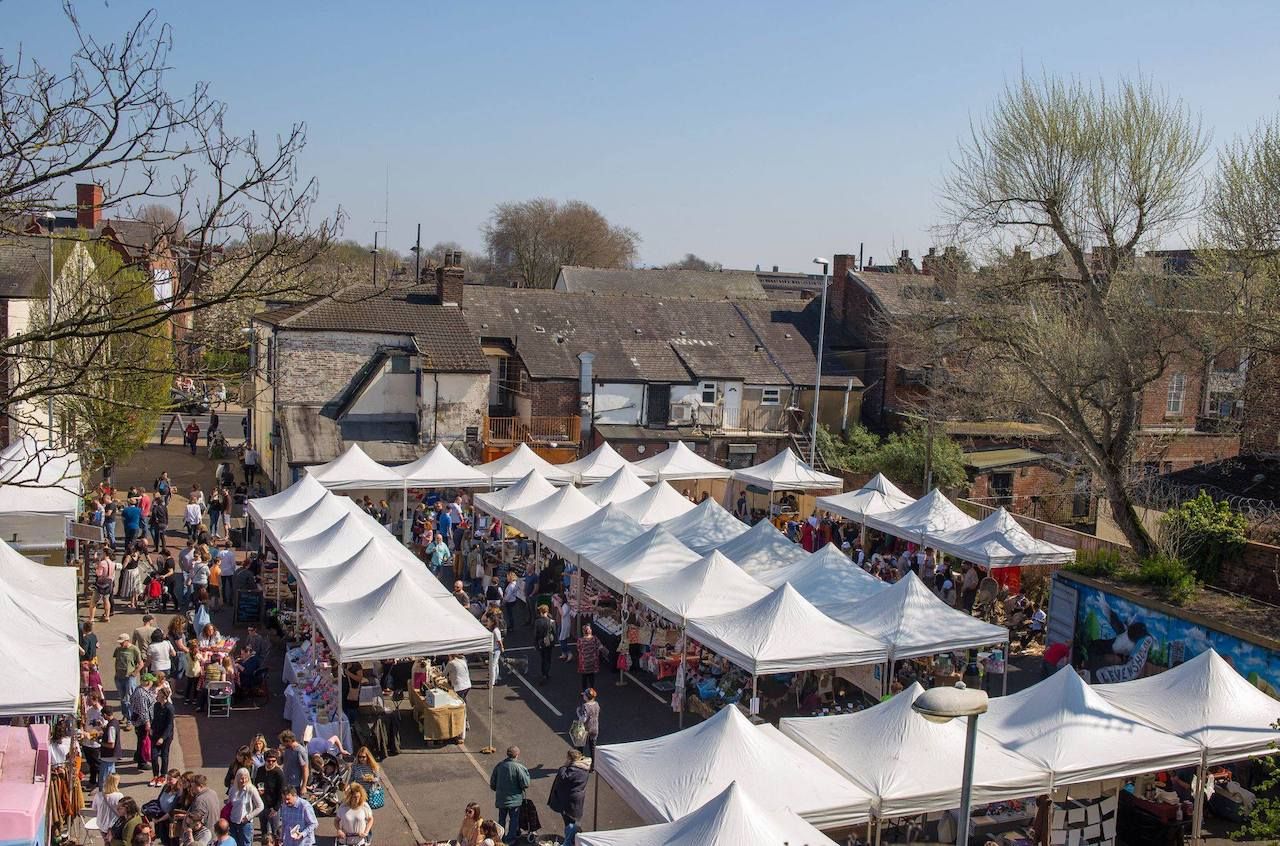
Photo: Levenshulme Market/Facebook
Levenshulme — Levenshulme is probably the one area that still mixes pockets of British, Irish, and Asian populations in close proximity in a way where everyone seems to get along just fine. It’s certainly not the shiny streets and brunching culture of Ancoats just yet, but it has a big heart that’s exemplified by the volunteer community groups who run everything from litter picks to garden plantings. Here too there are rows of grand old houses on Central and Park avenues, but the seeds of new growth are well-sprouted, too.
Go to Nordie on Stockport Road for craft beers and street food snacks, or head to The Talleyrand just a few doors down for art exhibitions, poetry readings, and specialist ales. Adjacent to The Talleyrand is Trove bakery and cafe, where you’ll find bread, cakes, and gourmet coffee worth waiting in line for. If you’re free on the weekend, make sure to pay a visit to the Levenshulme Market for arts and crafts, vintage clothing, and food and drink. The market is mainly held on Saturdays throughout the year, although the occasional Friday night events are also tremendously popular.
